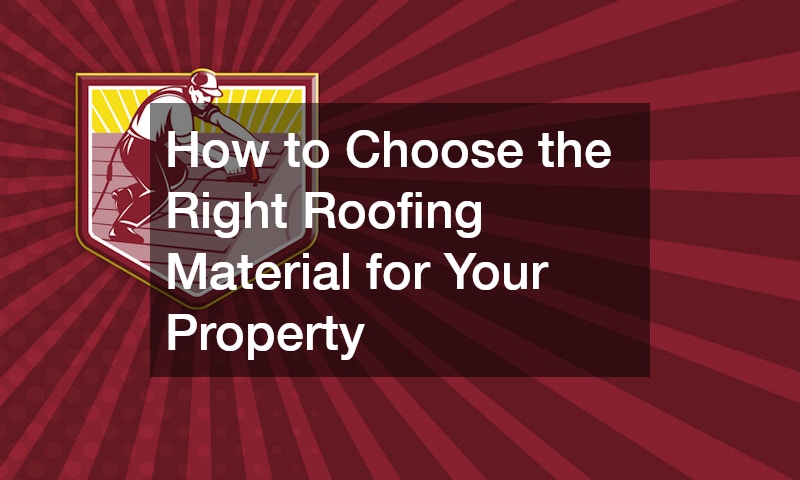Choosing the right material for your roof is one of the most important decisions a property owner can make. The roof not only protects your home from the elements but also plays a major role in its appearance, energy performance and long-term value. With so many options available on the market, it can be challenging to determine which solution suits your property best.
Budget & Long-Term Value
When evaluating roofing materials, it’s important to look beyond upfront costs. While some options may seem affordable initially, their maintenance requirements or shorter lifespan can lead to higher expenses over time.
For example, cheaper materials may need to be replaced sooner or require regular upkeep, driving up long-term costs.
Metal is often praised for its durability and resistance to corrosion. While the initial outlay may be higher than other alternatives, the return on investment over the years can make it worthwhile. Tiles, particularly concrete or terracotta, can also offer long-term value due to their strength and insulation benefits.
Choosing a material that matches your financial capacity while offering long-term savings ensures your investment is both practical and sustainable.
Aesthetic Appeal & Architectural Compatibility
Your roof plays a major role in your home’s overall aesthetic. It should complement the architecture rather than clash with it. For traditional or heritage-style homes, tiles may suit the design better, preserving visual consistency and enhancing curb appeal. On the other hand, sleek metal profiles often work well with modern or minimalist homes.
Colour and texture are also important. Darker colours may create a more dramatic effect, while lighter tones can soften the overall appearance. It’s worth consulting with a designer or builder to ensure your choice aligns with your home’s visual goals.
Some homeowners prioritise a unified look across all external materials, such as the cladding, guttering and fencing. This can be achieved by choosing roofing materials in tones or finishes that coordinate with other parts of the property.
Weight & Structural Considerations
Different materials vary significantly in weight. Heavier products like concrete or terracotta tiles require a more robust structure to support the load. If you’re building new or undertaking a renovation, this can be accounted for in the initial design. However, when re-roofing an existing home, the structure may need reinforcement to safely accommodate the added weight.
Lightweight options like metal sheeting are often easier to install and put less stress on the underlying framework. This can also reduce the labour and time involved, especially for retrofits or remote locations where transportation is a concern.
Before making a decision, it’s advisable to have a qualified builder or structural engineer assess your home’s capacity. This ensures your selected material will not compromise safety or performance.
Insulation & Energy Efficiency
A roof has a major impact on a home’s thermal comfort. Materials differ in their ability to reflect heat, retain warmth or insulate against temperature shifts. This affects not only comfort but energy bills too.
Some products come with built-in insulation or can be paired with additional layers to improve performance. Reflective coatings are also available for certain surfaces, helping deflect sunlight and reduce indoor heat buildup.
Although energy efficiency is not the sole factor to consider, it can significantly influence the ongoing running costs of a home. Consulting professionals who understand the energy ratings of different materials can help you make a decision that supports lower consumption and long-term comfort.
Local Environment & External Conditions
Choosing the right material also means considering how it will stand up to local environmental conditions. For example, areas exposed to strong winds, heavy rainfall or coastal air may require materials known for resilience and corrosion resistance.
Metal roofs with protective coatings can be effective in withstanding salt-laden air or heavy rains. Tiles, while sturdy, can sometimes shift or crack under certain pressure unless properly secured.
Speak with local builders or roof specialists who have experience in your region. They can advise on what works well locally and what issues to avoid. Their firsthand knowledge can make a big difference in your material’s performance over time.
Maintenance Requirements and Lifespan
Each material comes with its own maintenance expectations. Tiles may require occasional cleaning to prevent moss build-up or re-pointing if the mortar loosens. Metal options may need inspection for rust or resealing at joints.
When comparing materials, consider how long they are likely to last. Many quality roof coverings are designed to perform for decades, especially when correctly installed and maintained.
Selecting a material for your roof is about more than just looks. It involves balancing style, durability, budget and performance. With so many options available, the key is to understand your home’s needs and the pros and cons of each material.
Whether you choose metal, tile or another solution, ensure the product is backed by strong warranties and installed by licensed professionals. Quality installation plays just as vital a role as the material itself.
When chosen wisely, your roof enhances your property’s comfort, value and longevity. Take the time to explore your options, seek expert guidance and invest in a solution that works for your home in the long term.

